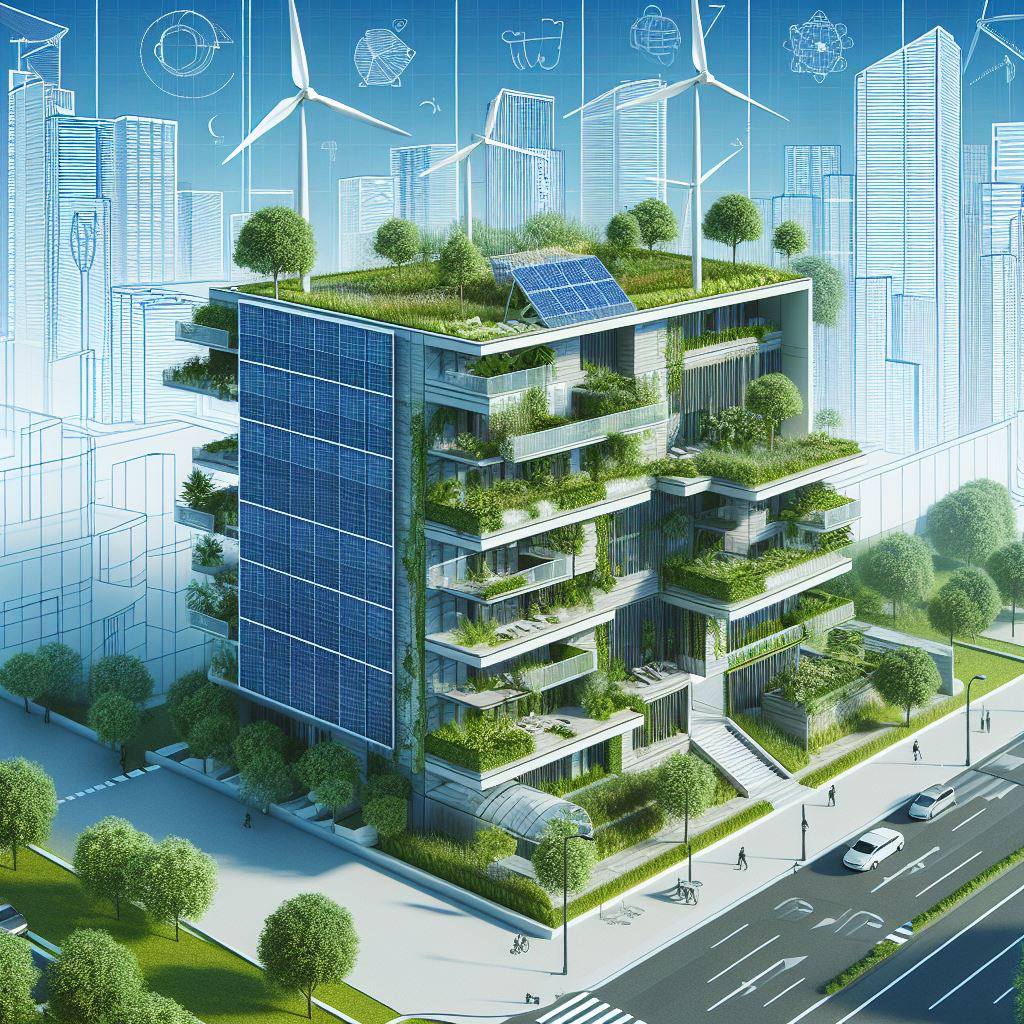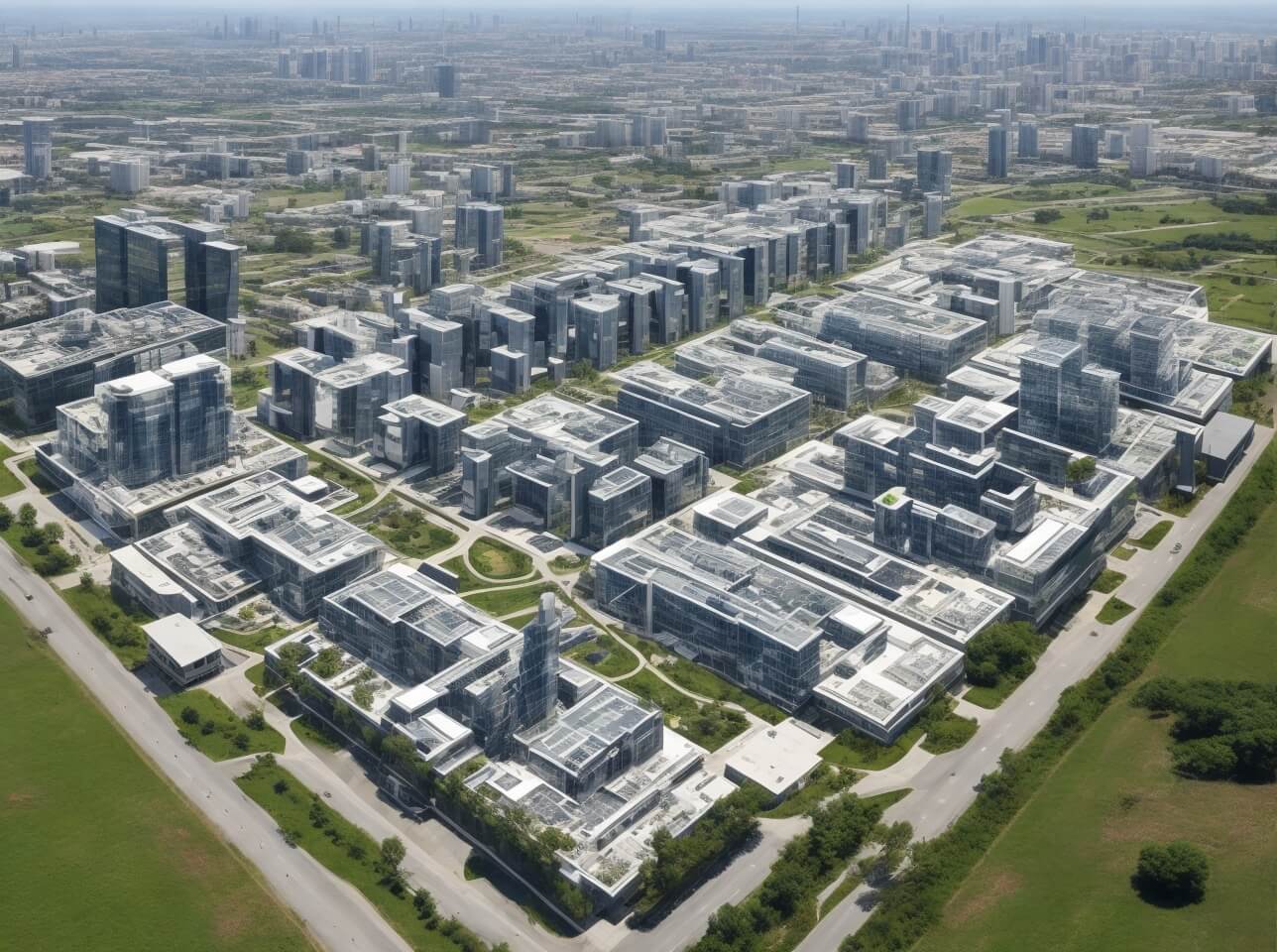 Zero-energy buildings (ZEBs) represent a groundbreaking shift in sustainable architecture and construction practices, embodying the epitome of eco-friendly design and energy efficiency. These innovative structures are designed to produce as much energy as they consume, achieving a delicate balance between energy demand and renewable energy generation. The concept of ZEBs has gained significant traction in recent years, fueled by growing environmental concerns, escalating energy costs, and the urgent need to mitigate the adverse effects of climate change.
Zero-energy buildings (ZEBs) represent a groundbreaking shift in sustainable architecture and construction practices, embodying the epitome of eco-friendly design and energy efficiency. These innovative structures are designed to produce as much energy as they consume, achieving a delicate balance between energy demand and renewable energy generation. The concept of ZEBs has gained significant traction in recent years, fueled by growing environmental concerns, escalating energy costs, and the urgent need to mitigate the adverse effects of climate change.
Energy-efficient design maximizes the potential of existing resources by integrating thoughtful planning and inventive construction methods that minimize energy use while ensuring superior comfort.
Insulation acts like a cozy wrap for your building. Its quality significantly reduces the energy needed for heating and cooling. Premium insulation traps warmth during winter and keeps heat at bay in summer, making it a high priority, particularly for zero-energy buildings.
Utilizing solar energy can greatly diminish dependence on artificial lighting. With the help of incorporating expansive windows and positioning them strategically, natural light can brighten indoor spaces, decreasing the reliance on electric lights.
Technology, like energy-saving appliances and intelligent thermostats, can be highly beneficial for effectively managing energy use and preventing wastage.
Renewable Energy Integration
Zero-energy buildings often harness a diverse range of renewable energy sources to meet their energy demands sustainably. Solar panels stand out as a popular choice, driven by their decreasing costs and continuously improving efficiency. These panels become more accessible and efficient, making them a viable option for a broader range of building projects.
Wind turbines and geothermal systems are also gaining traction as effective methods for on-site clean energy production. Wind turbines, with their sleek designs and quiet operations, can efficiently convert wind into electricity, particularly in areas with consistent wind patterns. On the other hand, geothermal systems tap into the Earth’s natural heat to provide heating, cooling, and hot water, offering a reliable and renewable energy solution.
While the integration of these renewable energy technologies necessitates an initial upfront investment, the long-term benefits are undeniably rewarding. Beyond the environmental advantages of reducing carbon emissions and decreasing reliance on fossil fuels, there are significant financial benefits to consider. The energy savings realized from these renewable sources can offset the initial costs, leading to substantial savings on energy bills.
With the right infrastructure in place, some zero-energy buildings can even become energy producers. By generating more energy than they consume, these buildings have the potential to sell excess energy back to the grid. This turns the building into a revenue-generating asset.
The Benefits of Net-Zero Construction
Reduced Energy Bills: the principle behind net-zero construction is simple and effective. When a building produces as much energy as it consumes, the result is a substantial reduction in energy bills. This financial benefit is a compelling reason for many to opt for net-zero construction, as it offers immediate savings and long-term financial stability.
Environmental Sustainability: utilizing renewable energy sources like solar panels, wind turbines, and geothermal systems, helps buildings contribute to a cleaner and greener planet.
Enhanced Comfort: net-zero construction prioritizes superior insulation and innovative design to maintain a consistent indoor temperature throughout the year. This results in enhanced comfort for occupants, eliminating the discomfort often associated with fluctuating temperatures and hot/cold spots. The thoughtful design elements ensure that the building remains comfortable and inviting, regardless of external weather conditions.
Resilience and Reliability: one of the standout features of zero-energy buildings is their resilience and independence from the traditional power grid. With their renewable energy sources and energy-efficient systems, these buildings are less vulnerable to power outages and fluctuations in energy prices.
Increased Property Value: society becomes increasingly aware of and values sustainable living practices, and the demand for zero-energy buildings is on the rise. Investing in a net-zero building offers the immediate benefits of energy savings and environmental impact and promises a higher resale value in the future. Buyers are increasingly willing to pay a premium for properties that align with their sustainability goals, making net-zero construction a wise investment choice.
Wrapping Up the Energy Package
Zero-energy buildings stand at the intersection of sustainability and innovation, offering a compelling blueprint for the future of construction. Focusing on energy efficiency and renewable energy integration, these buildings tackle the pressing issues of our time, from climate change to energy security.
Adopting net-zero construction doesn’t just make sense from an environmental standpoint; it’s also a smart financial move. With benefits ranging from lower utility bills to increased property values, it’s clear why this approach to building is gaining traction.
Green buildings reflect a commitment to a healthier planet and a sustainable future. We can make a substantial impact, by reimagining how we design, build, and power our spaces. The move to energy-neutral architecture it’s a necessary shift to ensure a better world for generations to come.
Next time you pass by a building that boasts its zero-energy status, give it a nod of respect. It’s not just a structure, it’s a statement—a commitment to a more sustainable and energy-efficient world. And who knows? Maybe one day, buildings that consume more energy than they produce will be nothing more than a relic of the past.

